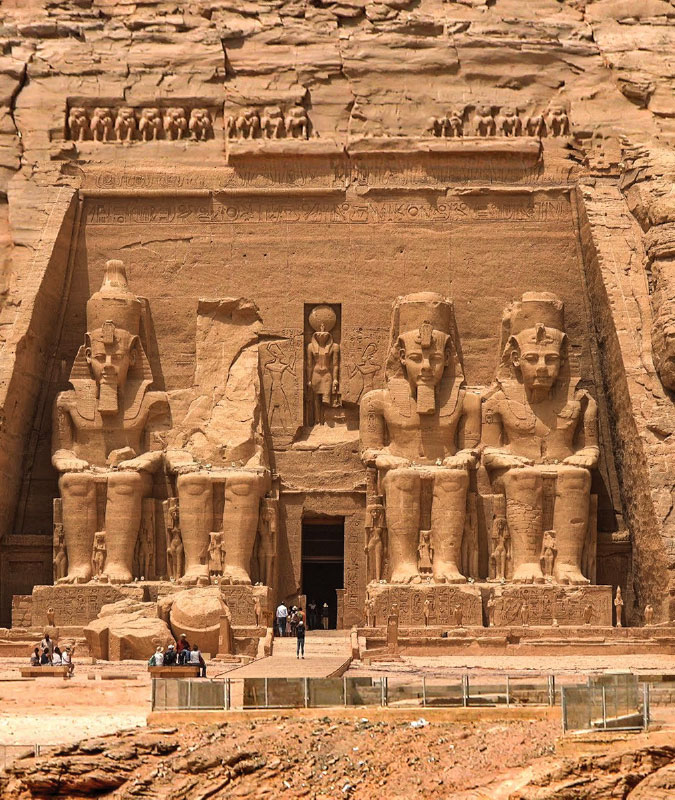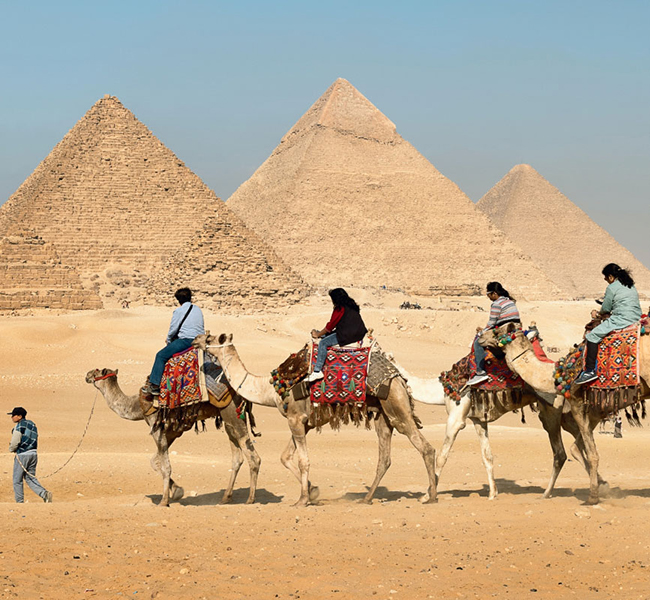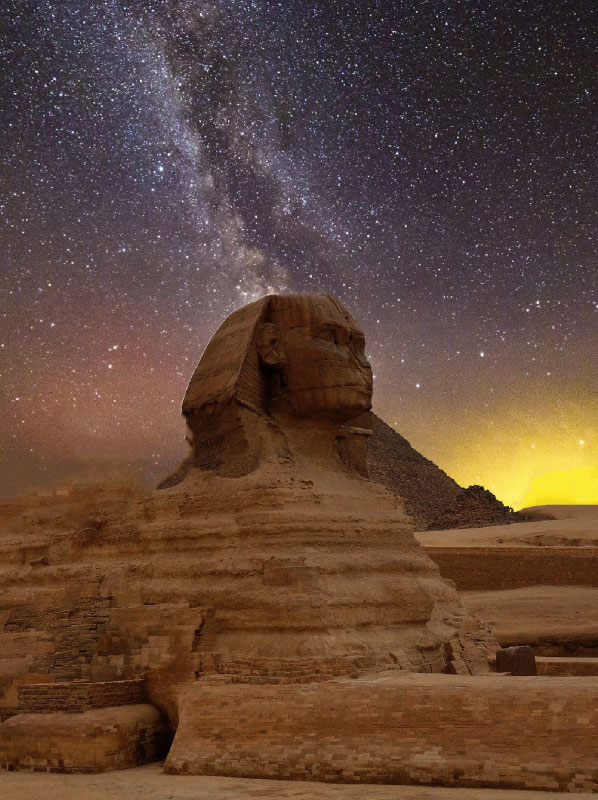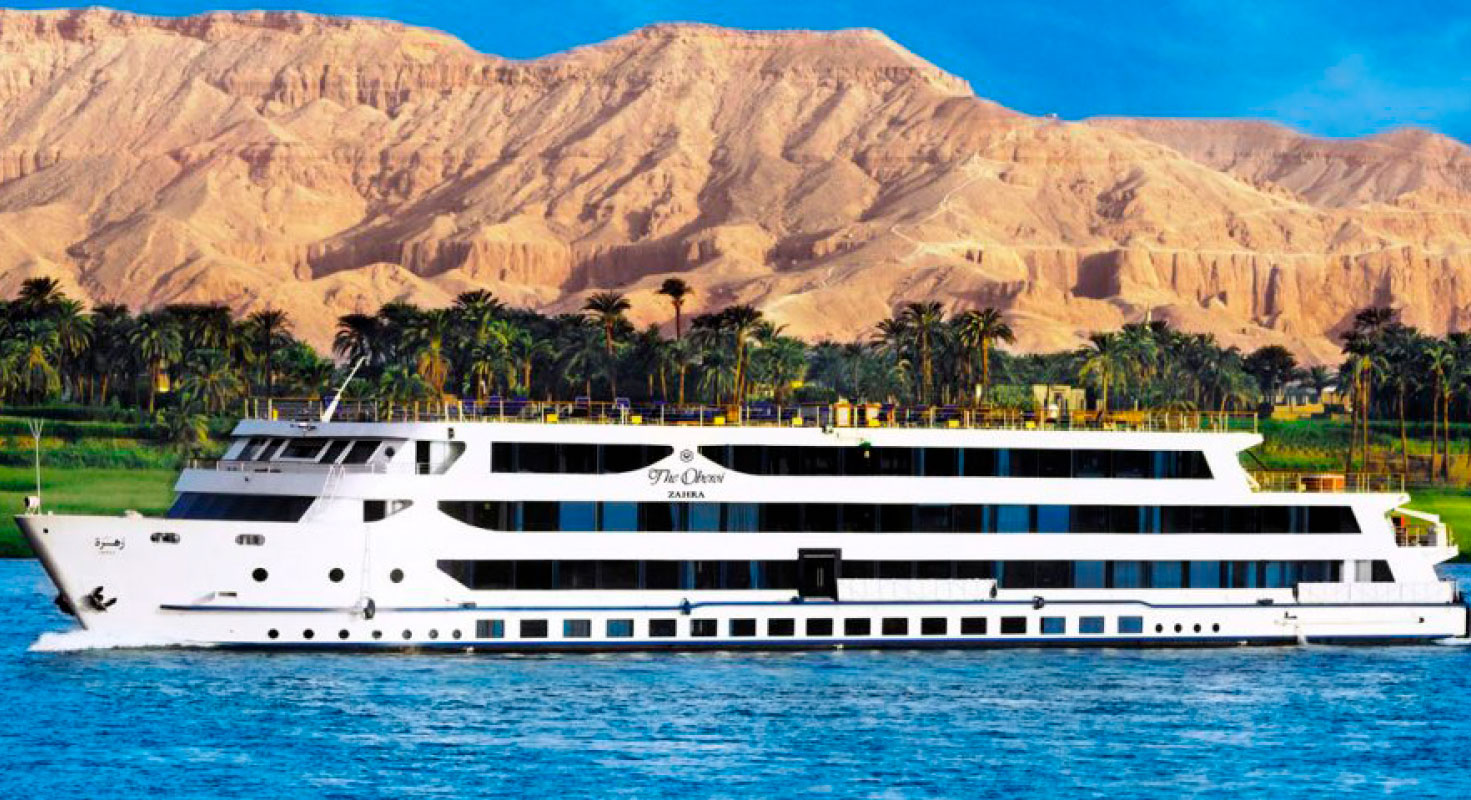
Ancient history has always fascinated me though I’m not a student of history. I learnt in high school the lacklustre history of India under the British and its parallel American history; both deterrents to proceed further. But my attention was captured in junior school by the thin texts with monocolour drawings, depicting ancient wonders of the world and civilisations. The three pyramids of Giza along with the Sphinx are still vivid in my mind. I learnt these pyramids were burial chambers of kings called Pharaohs; an engineering feat dating back 5,000 years. Ancient Indian history stopped with the Indus Valley civilisation and that area is now in our neighbouring country.

A visit first to the Egyptian section of the British Museum in London and later to the Louvre in Paris and The Met in New York fascinated me. If there can be so many artifacts in these three museums, it was easy to calculate the richness of the Egyptian civilisation. In London, I saw for the first time not one but many mummies; the mask of the boy Pharaoh Tutankhamun was impressive and the object most visited. But what got my attention was the Rosetta Stone. Discovered in the year 1799, it is a granodiorite stele inscribed with three versions of a decree issued in Memphis, Egypt, in 196 BC during the Ptolemaic dynasty. The discovery of this stone was a game changer for it led to the deciphering of the hieroglyphic characters present in all the old Egyptian sites. I did see a replica of the Rosetta Stone at The Museum of Egyptian Antiquities, Cairo, and could only sigh.
After 3,000 years, the Abu Simbel temples were shifted to a higher platform to make way for the Aswan Dam and the rising River Nile.
A visit to Egypt was inevitable. At the planning stage, I was advised by my sister Latha to stay at the Mena House in Giza, a hotel with a magnificent view of the Pyramids. As we approached Giza, the first look at the Pyramids was thrilling, as I was seeing the only Old World Wonder in existence. After a closer look at the Pyramids and the Sphinx, we decided to return in the evening for the Sound and Light Show. Showing us the new Egyptian museum, still under progress, our guide Tamer told us that the largest statue in Egypt, that of Ramses 2, was taken down from the Ramses Square a couple of decades ago, and kept in storage to be later placed in the new museum.

The name of Ramses 2 came up many times during our visit. The Egyptian museum was a treasure trove and overflowing. Time was the only restraint. The Tutankhamun Mummy was special with its three gold coffins snugly fitted into each other and the sarcophagus made of stone. Precious jewels and other artifacts found in the sarcophagus were also on display.
Looking out at the Mediterranean Sea in Alexandria, I could literally visualise Julius Caesar and Mark Antony coming in with their fleet. I was disappointed not to see the Lighthouse or Pharos of Alexandria which would have then guided them in. The Ptolemaic era library had been lost to a fire and in its place stood a massive modern library. After visiting the other sites that Alexandria offered, Tamer told us that Ramses 2 had moved his capital from Thebes (modern day Luxor) to Pi-Ramesses which was at the eastern delta of the Nile.
Looking out at the Mediterranean Sea in Alexandria, I could visualise Julius Caesar and Mark Antony coming in with their fleet.
Next we reached Luxor to begin our Nile cruise; almost everything in Luxor had to do with Ramses 2. It was the capital city during most of his reign which lasted 66 years from 1279–1213 BCE. He died at 90 in 1213 BC. Becoming a Pharaoh at 24, during his long reign, he fortified his kingdom which included Nubia in the south to Levant and Canaan and Hittites which includes the present day Syria, Lebanon, Jordan, Israel, Palestine and most of Turkey. The pyramids belonged to the earlier pharaohs. He decided to build massive temple structures; even those built by earlier kings were strengthened and decorated with his statues, carved out of stones to last forever.

The Ramesseum in Luxor, also called Mortuary Temple or Memorial Temple, is a massive structure that will take your breath away.
On reaching Aswan and after seeing the marvel that is the Aswan Dam and the adjoining Lake Nasser, we were all geared up to go to Abu Simbel, 250km away, at the border with Sudan. The roads were fine, but the territory being notorious for dacoits and other highway crimes, we started before sunrise and went in a convoy with armed police personnel in each car and traversed through a part of the Libyan desert. The excitement was mounting for we were to witness a marvel that was created 3,200 years ago and was a conservation and engineering miracle of the 20th century.
When the Ramses 2 mummy was flown to Paris for restoration it was received at the Le Bourget Airport with military honours befitting a king.
Abu Simbel was built by Ramses 2 in the year 1255 BCE with separate temples for his wife Queen Nefertari and him. With the passage of time the whole complex was covered by sand and it was only in the early 19th century that it was discovered. After remaining in the same position for 3,000 years, the temples had to be shifted to a higher platform to make way for the Aswan Dam and the rising River Nile. With the temples being carved into rocks, the dismantling and restructuring involved a lot of planning before executing. The work was carried out by Atlas Copco along with other companies. The end result is beyond comparison and only a microscopic look will show the fine lines that separate the blocks of rocks.
One cannot but look in awe at a ruler who could, over 3,200 years ago, make such everlasting monuments.
When the Ozymandias (Greek name for Ramses 2) mummy was found in an ordinary wooden coffin at the Valley of the Kings at Luxor, it was not in a good condition. The French convinced the Egyptian government that it needs to be taken to Paris for restoration and in 1976, the mummy was received at the Le Bourget Airport with military honours befitting a king.
Peppercorns were used during mummification of Ramses 2 to keep his aquiline nose in shape.
The King of King’s presence is felt all over Egypt, but did the outside world hear of him then? And what can answer that better than the pepper corns that were used during mummification to keep his aquiline nose in shape!
The Malayali in me was both intrigued and excited.
The writer is a member of Rotary Club of Madras Midtown, RID 3232.





